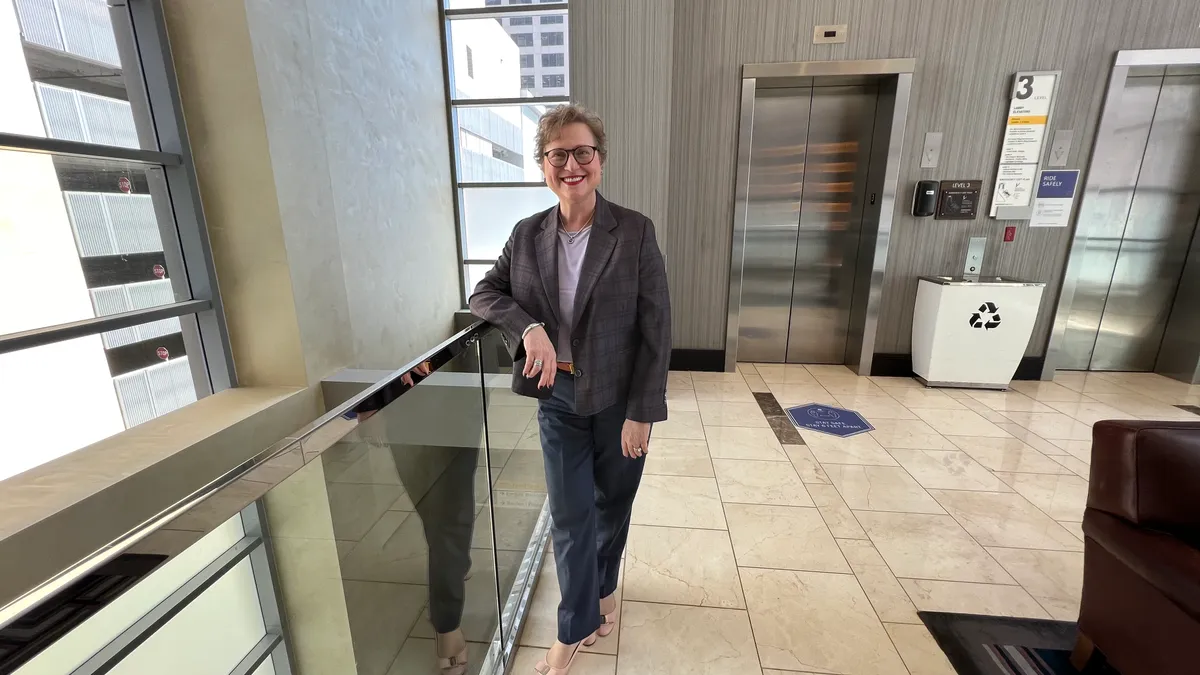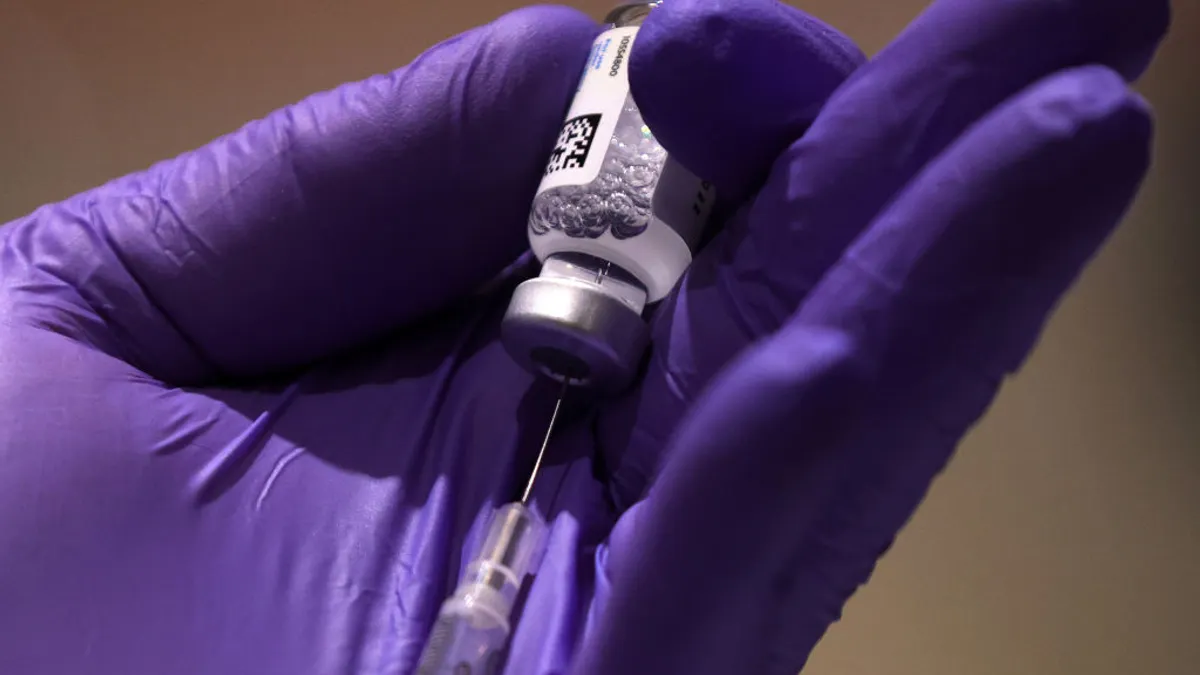In 20 years of clinical practice, Dr. Roslyn Schneider, has never loved using the term “the patient,” because she believes each person has his or her own experience. This person-centered — not patient-centered — approach to addressing healthcare challenges, particularly advocacy and engagement, has been at the heart of everything Schneider has focused on throughout her professional career, including in her new role as vice president, head of Global Patient Advocacy & Engagement at BioMarin Pharmaceutical.
Dr. Roz, as she’s known in the industry, is quick to admit that “person-centered” isn’t exactly the correct nomenclature either, but it is closer to how she views the experiences that people living with disease face every day.
“I struggle with the word patient, I think people living with illnesses struggle with the word patient, because we're all people before we're patients,” she says. “We have lives that we're living and then a diagnosis interrupts that life. And we have to figure out how that diagnosis and treatment fit into our life — and I say that as a patient myself. At the same time, the word person, which I try to use more often, doesn't completely capture the unique experiences that we have when living with a particular diagnosis. So, I wish there was a better word that captured what we all face and still recognizes us patients as people.”
Schneider is bringing this people-first philosophy to her new position at BioMarin, a global biotechnology company with a focus on developing and commercializing breakthrough therapies for rare, ultra-rare, and other genetic diseases. With seven products already on the market and several product candidates in the pipeline and in preclinical development, she is defining a broad remit for her team that touches all the way from early research through commercialization and maturity on a global landscape.
In our continuing leadership series, “The First 90 Days,” PharmaVoice 100 Schneider discusses the evolving global role of advocacy and engagement in the rare disease space, her short-term and long-term goals, and her approach to achieving the holy grail of advocacy and engagement metrics.
PharmaVoice: As the new VP, head of global patient advocacy and engagement, how is your role helping to elevate the company’s patient advocacy and engagement strategies?
Dr. Roslyn Schneider: The goal is to create a holistic approach to patient centricity — end to end. It's not about the transactions, but the long-term relationships.
My goal is to drive and build on the model that BioMarin already has around patient advocacy and engagement and to bring together the people, the principles and the practices. Our people are passionate and patient-focused, and they have a lot of expertise. We have principles and policies in place. My role entails taking that passion and making sure what we do is operational and sustainable, despite the fact that our health ecosystem is constantly changing. Our team engages with internal and the external stakeholders and by identifying those intersections of shared purpose, and understanding that each function, each group, each organization will have its own lens and focus, we can be successful.
The other thing the role entails, and this is something I think every senior leadership role should entail, is it to personally invest in the development of our colleagues inside the organization and outside of the organization. And not for extra credit or a nice to do, but in ways that are integral to what defines us as successful organizations.
How does global advocacy and engagement differ from a specific focus on U.S. patients?
First, if we want to create a holistic approach, we need to recognize that there are differences. Then, we have to recognize and acknowledge those diverse experiences and try to incorporate them in ways that still allow us to function as one organization and have those connections. We need to consider not only the diverse experiences in regions and in different countries but even within countries. As we look across the United States, there are many differences from one state to another, or even within one city. In addition to recognizing the lived experiences that are different, we also have to recognize that there are differences in codes of practice and differences in laws and regulations when we go region to region or even country to country.
The global team that that I'm leading is tasked with making sure that we have the corporate guideposts and corporate principles so that we can speak with one company voice. At the same time, we are creating the platforms and the processes for alignment and bidirectional sharing across different functions, as well as across countries and regions. This will enable us to tailor and nuance what has to happen in different regions and for local implementation of the programs we are developing.
What are some of your near-term and longer-term strategic goals to improve patient advocacy and engagement?
For the near term, I've taken the time to really listen carefully — to my team, to my colleagues who are leading and working in functions across the company, and to the patient organizations that we are collaborating with to understand their expectations of us. I've been working with my team to develop integrated strategic plans, so that we can ensure the timely and visible inclusion of patients is iterative across the lifecycle, so that we can enhance the quality and the efficiency of what we're doing.
Long term, I'm very interested in identifying more relevant metrics for patient engagement, which will be a big change for the whole industry. As we mature in our practices and in our experience with patient engagement within in an ecosystem that is changing, we do need metrics to know how we're doing and to continue to learn. This is not specific to BioMarin, but these metrics have been elusive for some time for the industry. We can measure operational metrics, like the number of avoided amendments, recruitment speed and retention in clinical research. I want to get to that holy grail of making healthcare better by understanding the patient experience and making sure the research meets the needs of all of the communities that we are supposed to be serving.
The rare disease community has long been pioneering meaningful patient engagement with stakeholders, in healthcare policy and in research and in practice. My philosophy to enable transformational change in the way people live their lives — the way they feel, function and survive — is to partner with patient communities to understand what's important to them, understand their experiences, understand their preferences. This is the only way to have any idea of what is transformational to them.
With seven rare disease and ultra-rare products on the market and several more in the pipeline, does each product require its own advocacy and engagement strategy?
Yes, each product and pipeline asset has to have its own strategy. At the same time, that strategy for advocacy and engagement doesn't stand alone. In order for those strategies to be effective and sustainable, they have to be integrated into the broader strategies for that specific product or pipeline treatment. Part of the remit of my global patient advocacy and engagement team is to function as a hub. We work to incorporate those global, regional and local perspectives as well as functional perspectives, then with those teams we can create integrated plans and bring the strategy for patient advocacy and engagement into those larger plans.
You’ve had a very successful career, including 12 years at Pfizer, culminating as Global Patient Affairs lead, and many consider you the OG of patient advocacy and engagement. What drew you to the role at BioMarin?
I am really grateful for every opportunity that I've had in my career. I keep looking toward that destination of a more person-centered healthcare and research approach. I had an epiphany many years ago, when I recognized the roles I held at different companies or hospitals were the vehicles to get to a more person-entered healthcare and research destination. I’ve been fortunate enough work at a big company, at a smaller company, in consulting, and clinical practice and academia. What drew me to BioMarin was its legacy of patient focus and working systematically and collaboratively with communities of people and their families who are living with genetic illnesses.
As an industry, what is one of the biggest gaps in terms of patient engagement?
As an industry, we need to work with the communities and take advantage of opportunities that they may be able to create and work together even as competitive companies. There's still a place for us to work for ‘people’ organizations as individual companies on projects, but ‘coopetition,’ is something that we all need to work on.
Your brand as Dr. Roz carries quite a bit of weight. How are you using your persona to your advantage to bridge some of the gaps that exist today?
I guess my brand is motivational optimism. I believe meaningful patient engagement is foundational to improving health and wellness, as well as improving our business success. I take something from each chapter into the next. And I've treasured each of the chapters of my personal professional life. And within each of those chapters, I've had partners and mentors and sponsors, it’s basically the village. I'm never going to lose sight of the fact that I'm a physician, a patient, a parent, a spouse, a daughter — I take all of that with me as I continue to serve the same mission I’ve had since medical school — improving patient outcomes. I'm really delighted to be serving this mission now at BioMarin.




















